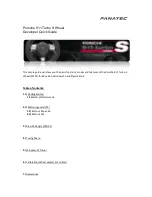
Loading
Vehicle features and options
This chapter describes all standard, country-
specific and optional features offered with the
series. It also describes features that are not
necessarily available in your vehicle, e. g., due
to the selected options or country versions.
This also applies to safety-related functions
and systems. When using these functions and
systems, the applicable laws and regulations
must be observed.
Safety information
WARNING
High gross weight can overheat the tires,
damage them internally and cause a sudden
drop in tire inflation pressure. Driving charac‐
teristics may be negatively impacted, reducing
lane stability, lengthening the braking distan‐
ces and changing the steering response.
There is a risk of an accident. Pay attention to
the permitted load capacity of the tires and
never exceed the permitted gross weight.◀
WARNING
Loose objects or devices with a cable
connection to the vehicle, for instance mobile
phones, can be thrown into the car's interior
while driving, for instance in the event of an ac‐
cident or during braking and evasive maneu‐
vers. There is a risk of injury. Secure loose ob‐
jects or devices with a cable connection to the
vehicle in the car's interior.◀
WARNING
Improperly stowed objects can shift and
be thrown into the car's interior, for instance in
the event of an accident or during braking and
evasive maneuvers. Vehicle occupants can be
hit and injured. There is a risk of injury. Stow
and secure objects and cargo properly.◀
NOTE
Fluids in the cargo area can cause dam‐
age. There is a risk of damage to property.
Make sure that no fluids leak in the cargo
area.◀
Steps for Determining
Correct Load Limit
1.
Locate the statement “The combined
weight of occupants and cargo should
never exceed XXX kg or XXX lbs.” on your
vehicle’s placard.
2.
Determine the combined weight of the
driver and passengers that will be riding in
your vehicle.
3.
Subtract the combined weight of the driver
and passengers from XXX kg or XXX lbs.
4.
The resulting figure equals the available
amount of cargo and luggage load ca‐
pacity. For example, if the “XXX” amount
equals 1,400 lbs. and there will be five
150 lb passengers in your vehicle, the
amount of available cargo and luggage load
capacity is 650 lbs. (1,400–750 (5 x 150) =
650 lbs.)
5.
Determine the combined weight of lug‐
gage and cargo being loaded on the vehi‐
cle. That weight may not safely exceed the
available cargo and luggage load capacity
calculated in Step 4.
6.
If your vehicle will be towing a trailer, load
from your trailer will be transferred to your
vehicle. Consult this manual to determine
how this reduces the available cargo and
luggage load capacity of your vehicle.
Seite 212
Driving tips
Loading
212
Online Edition for Part no. 01402983801 - X/17
Содержание X5 2018
Страница 2: ......
Страница 14: ...Online Edition for Part no 01402983801 X 17 ...
Страница 36: ...Online Edition for Part no 01402983801 X 17 ...
Страница 205: ...Storage compartments Controls 205 Online Edition for Part no 01402983801 X 17 ...
Страница 206: ...Online Edition for Part no 01402983801 X 17 ...
Страница 222: ...Online Edition for Part no 01402983801 X 17 ...
Страница 280: ...Online Edition for Part no 01402983801 X 17 ...
Страница 297: ......
















































